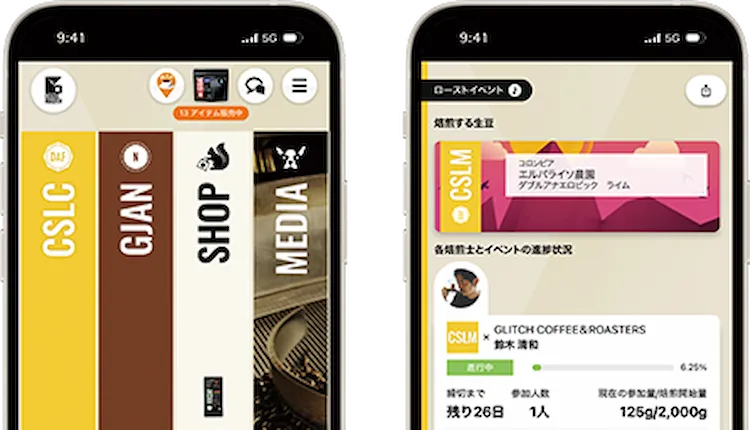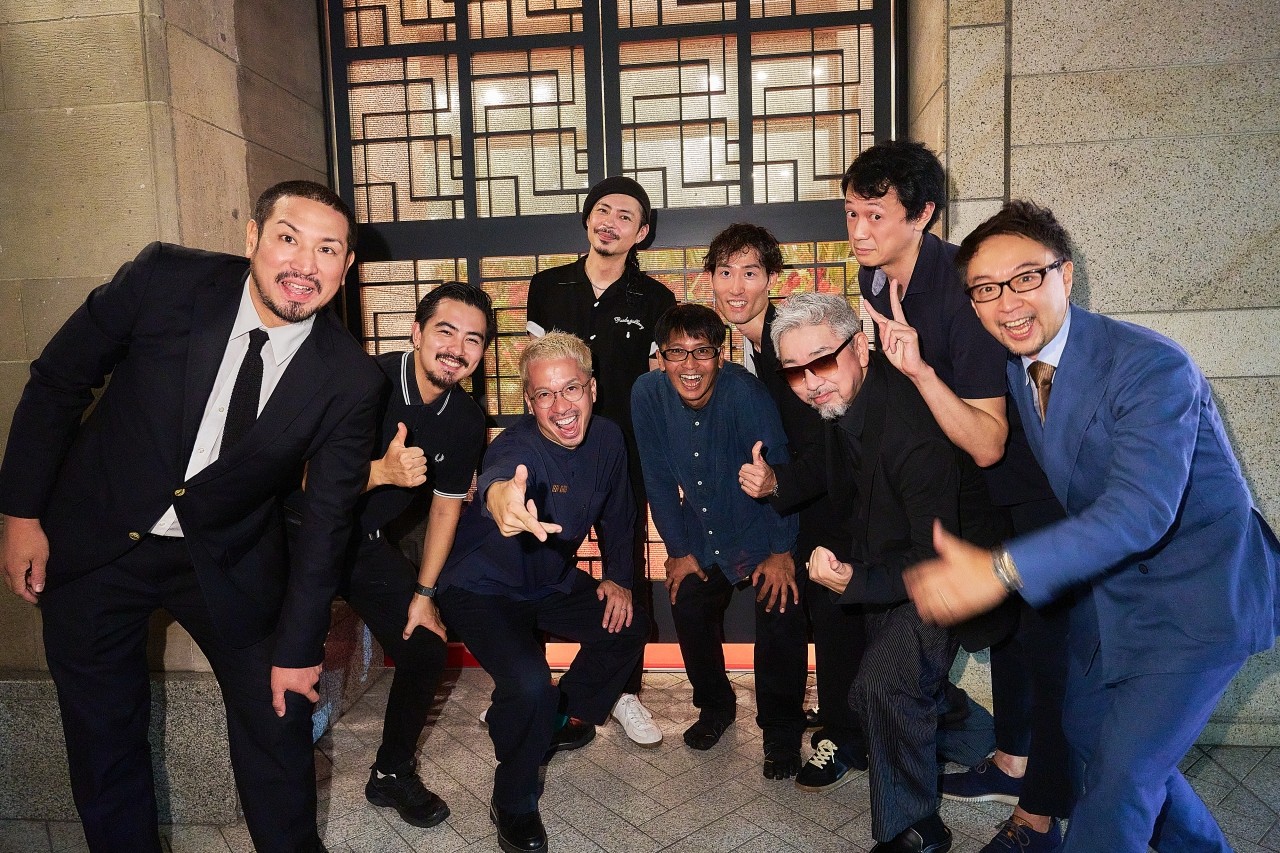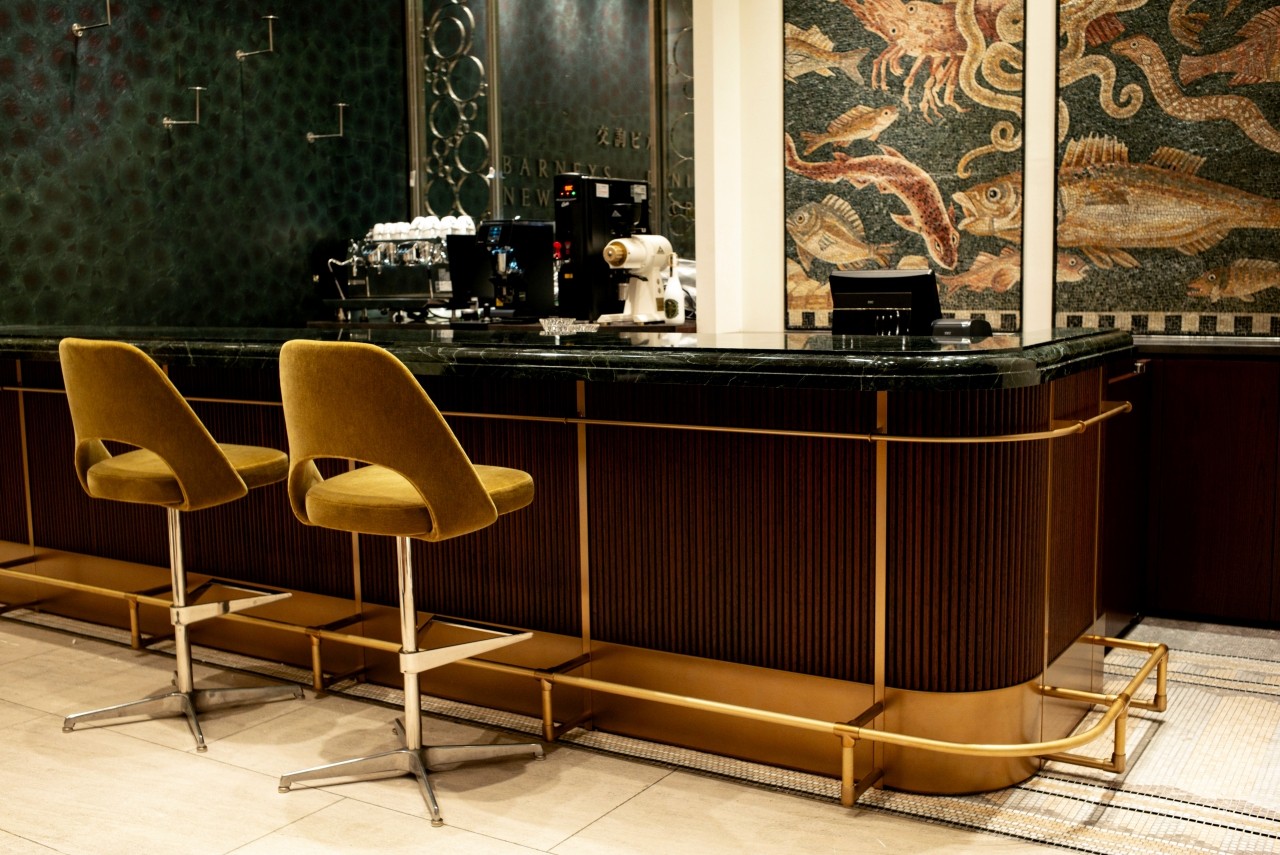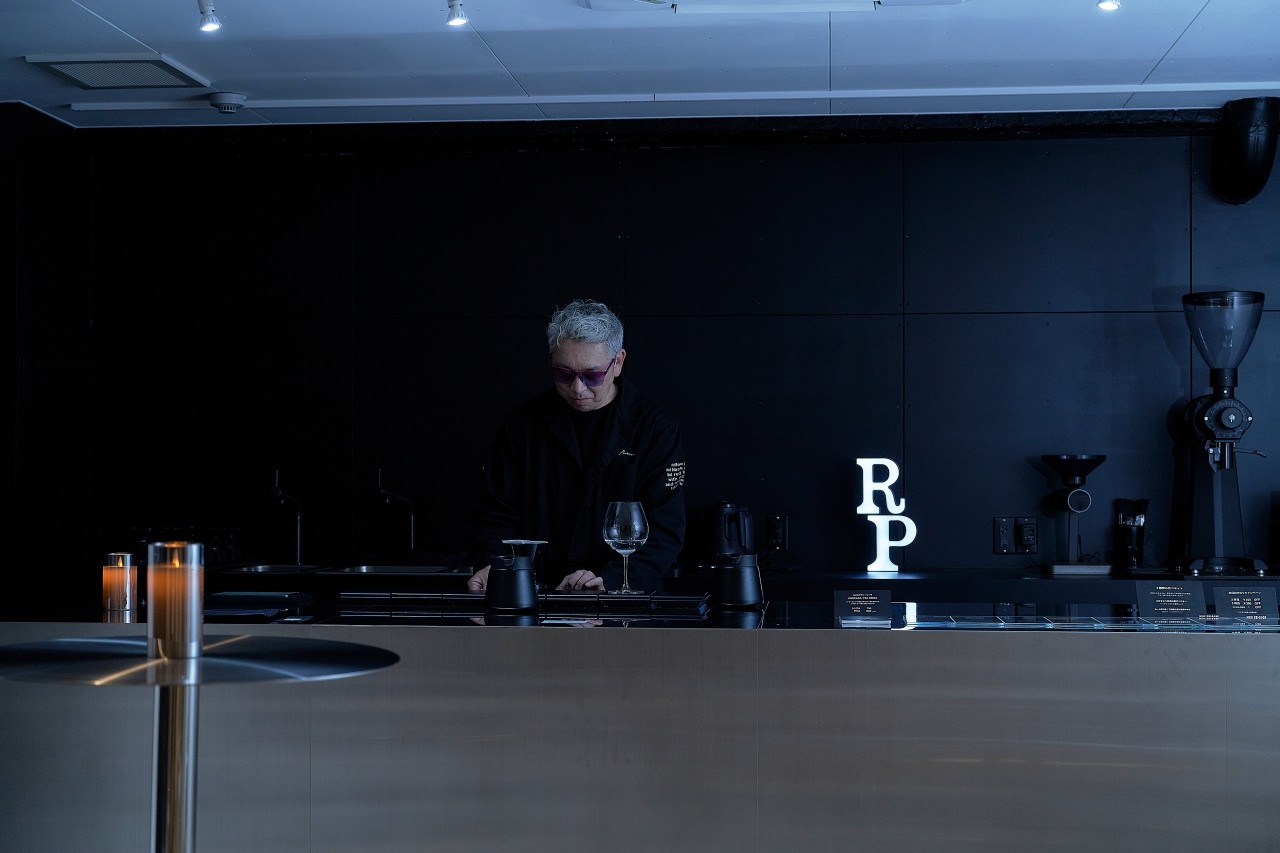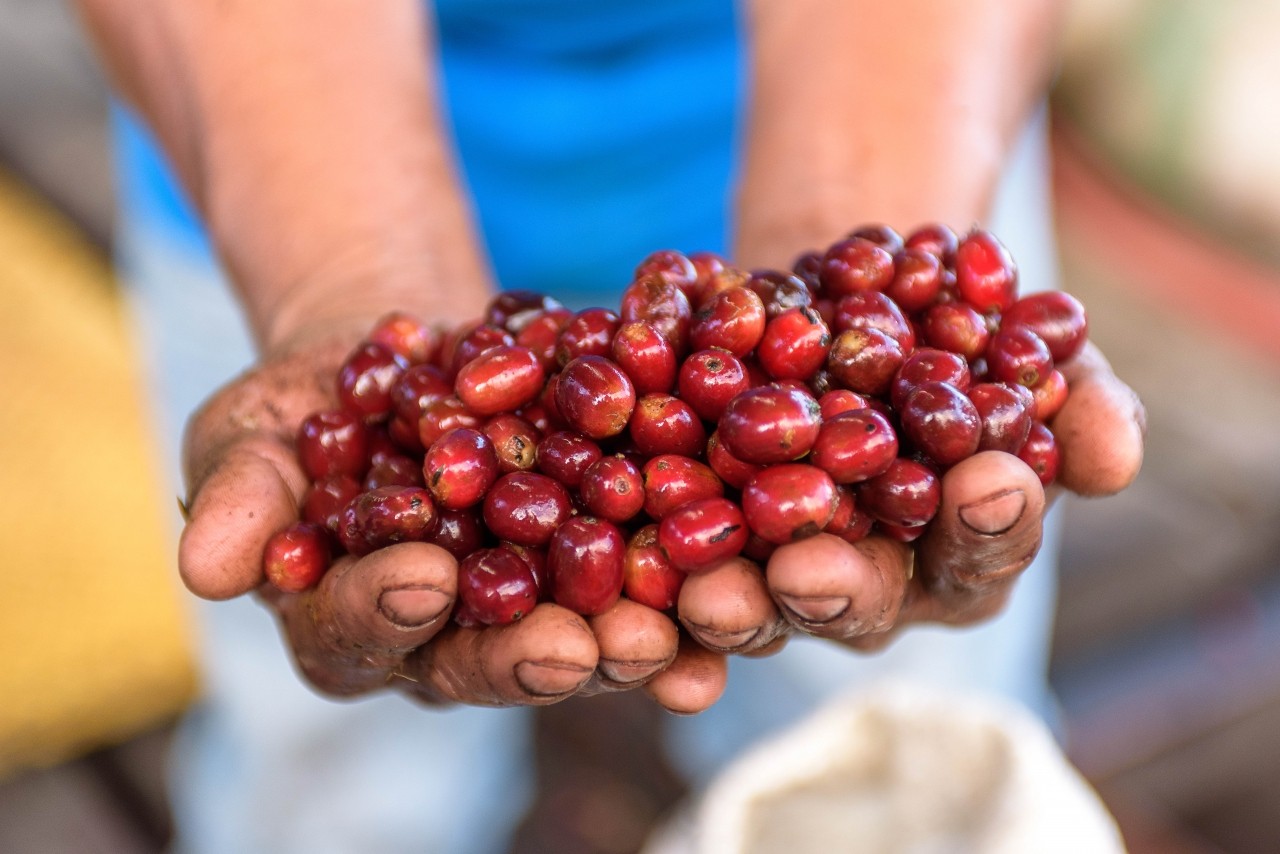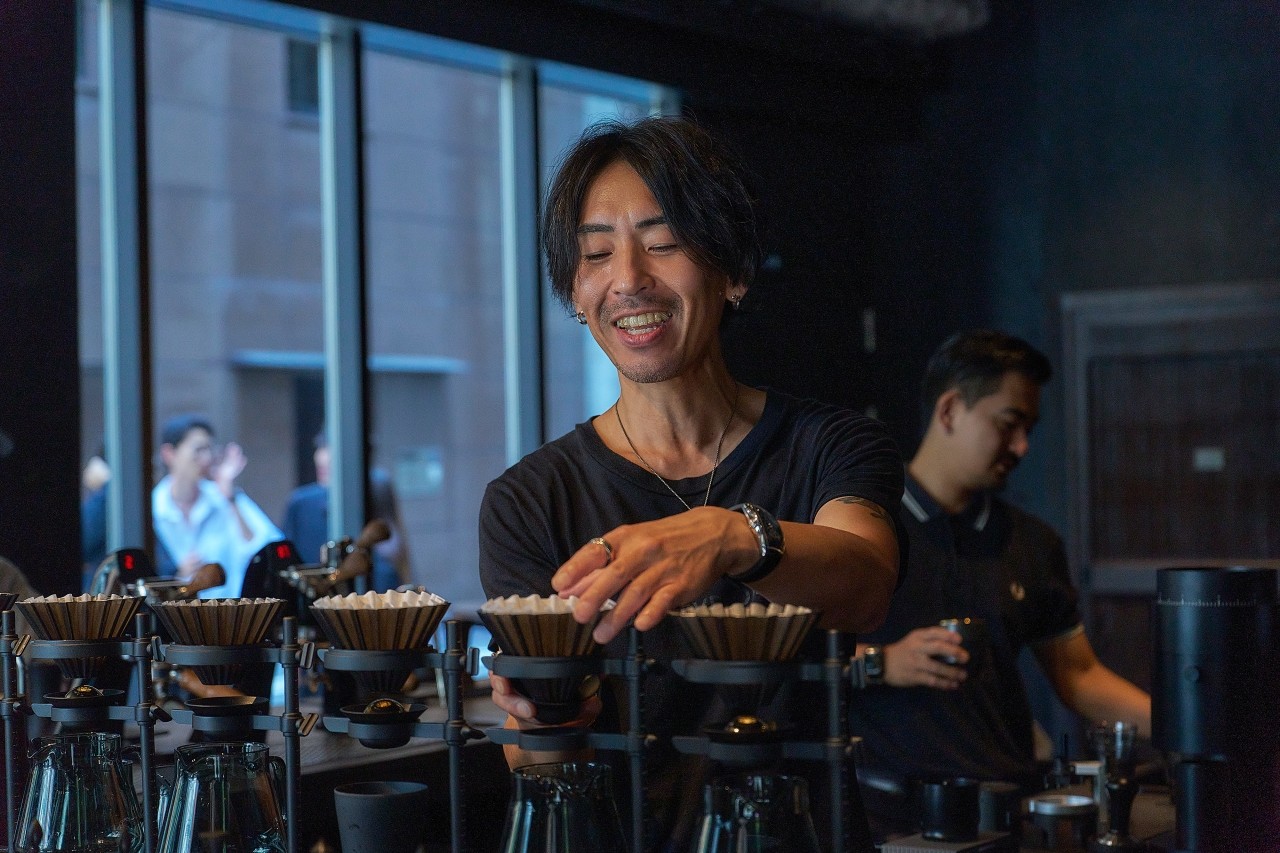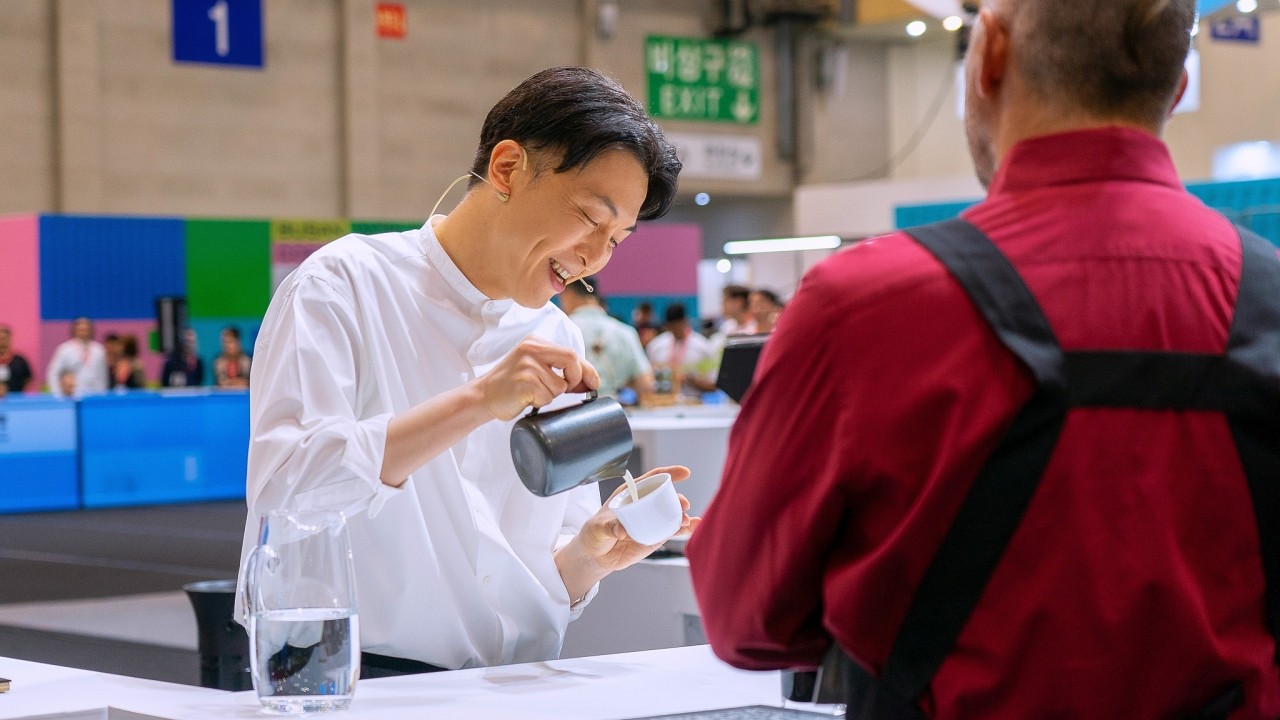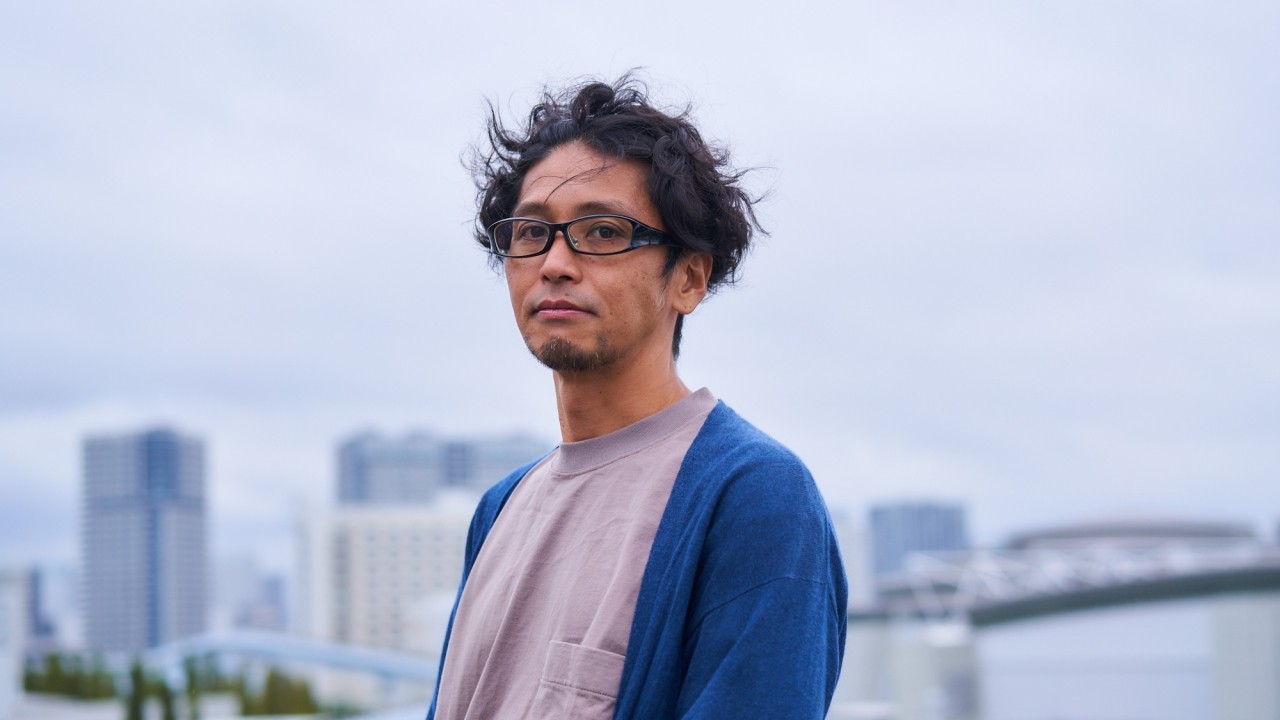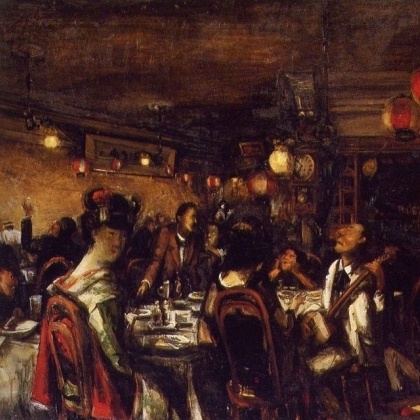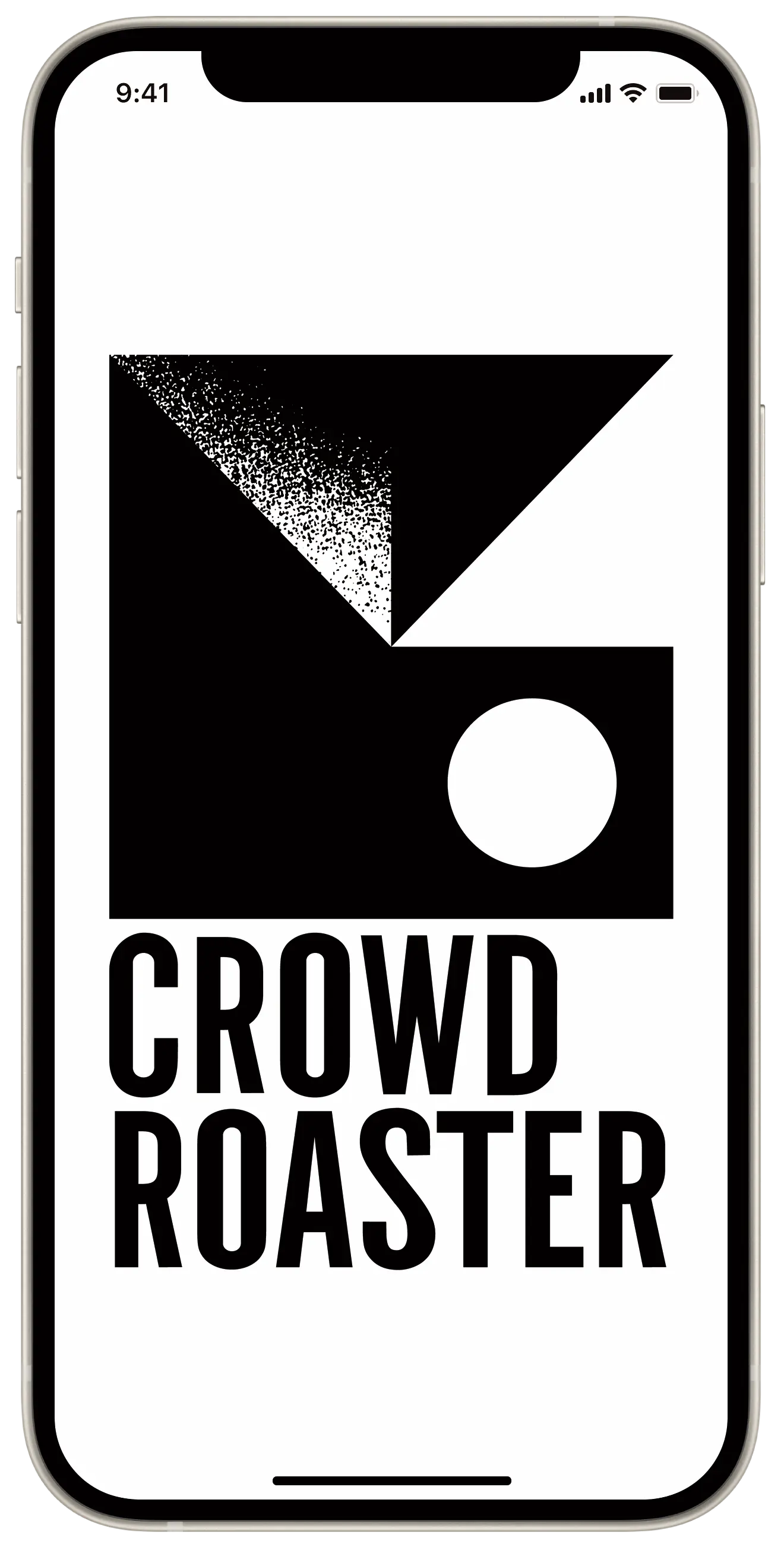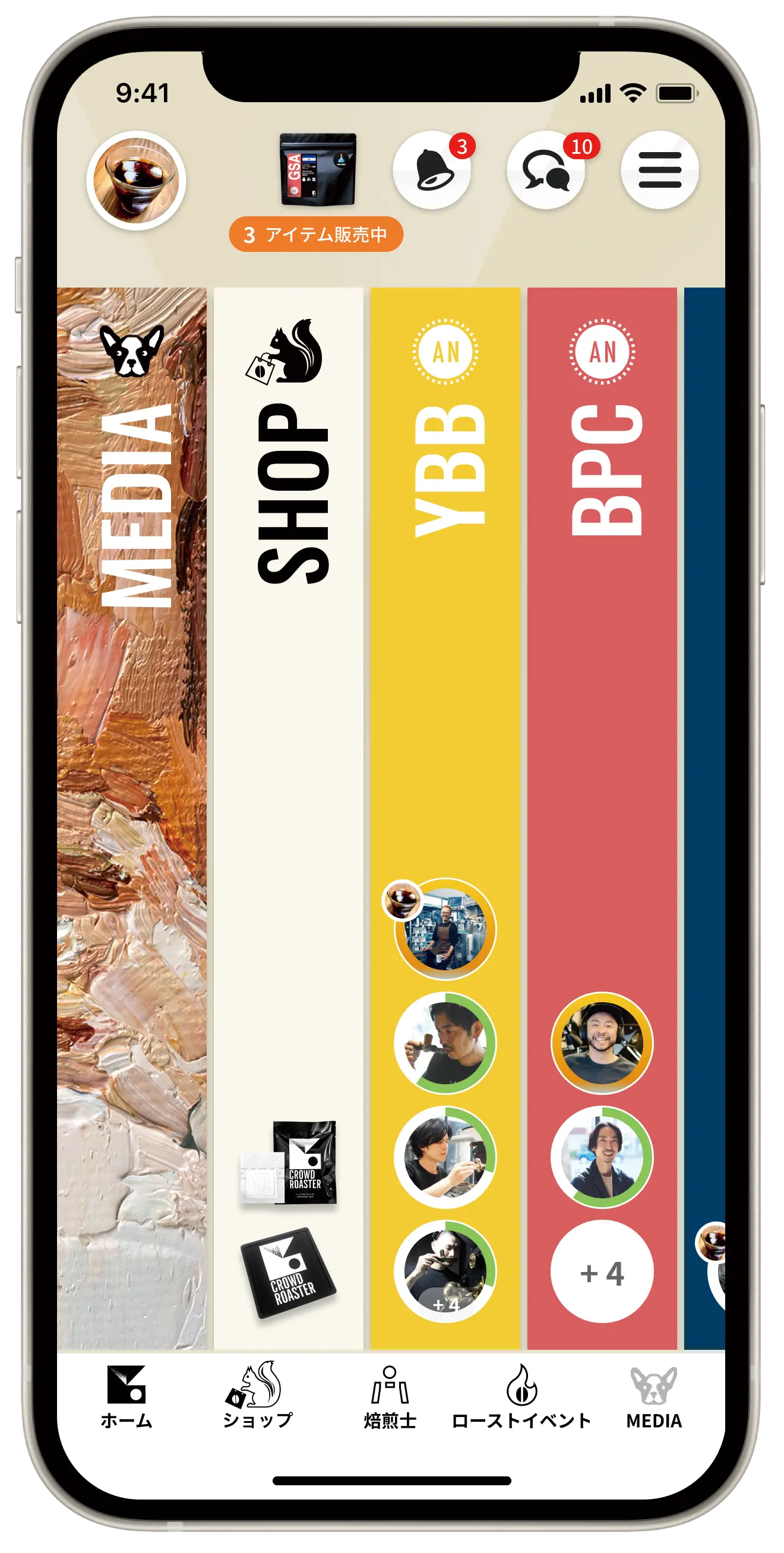Japan's first coffee shop [Coffee's past and future]
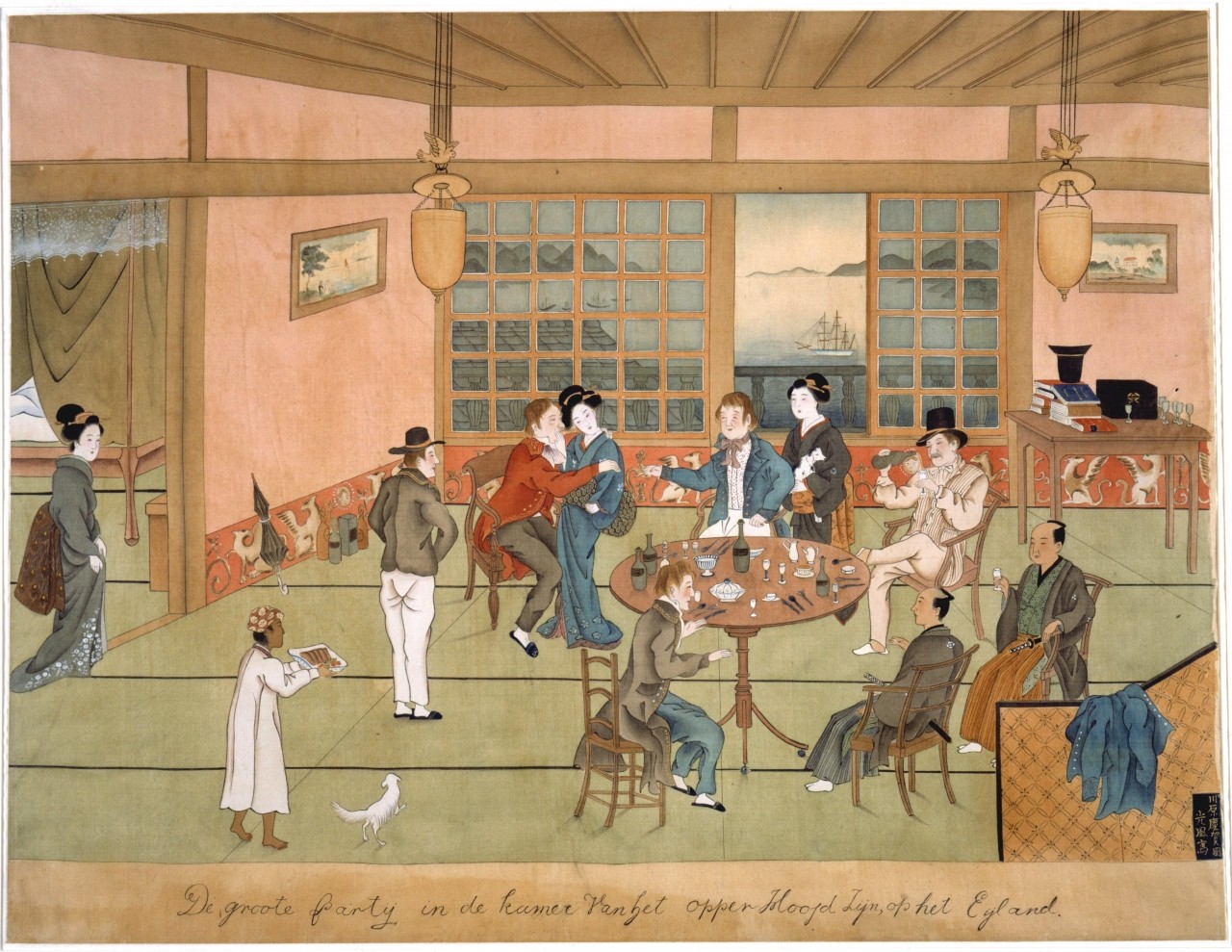 <Dinner at the Dutch Trading Post, by Kawahara Keiga>
<Dinner at the Dutch Trading Post, by Kawahara Keiga>Japanese people's encounter with coffee at the Dutch trading post
The relationship between the Japanese and coffee is almost identical to the history of exchange between Japan and Western civilization, but coffee had not yet been introduced during the Sengoku period, the first time Japan came into contact with Western civilization.
This encounter would not occur until the 1700s, when coffee, which was widely enjoyed in the Arab world, was introduced to Western Europe and began to spread.
At that time, Japan was in the Edo period and its contact with Europe was limited to trade with Dutch merchants in Dejima, Nagasaki (the so-called isolationist policy).
The Dutch East India Company was an early adopter of the coffee trade, importing and selling the coffee as well as transplanting it to colonies such as Java. Naturally, coffee was soon brought to Japan as well, but it was not yet a trade commodity.
According to the recently republished book "Japanese Coffee" (by Okuyama Gihachiro, Kodansha Manabu Art Library), Siebold, who was posted to Dejima, Nagasaki as a doctor in 1823, wrote the following:
"It is truly surprising that coffee has not yet become a Japanese drink, despite having been in contact with coffee merchants (Dutch) from around the world for over 200 years. The Japanese enjoy drinking coffee when they meet with us."
At the Dutch trading post on Dejima, the Dutch, who were responsible for the global coffee trade, brought large quantities of coffee and drank it regularly. And, as Siebold stated, the Japanese people he interacted with on Dejima also enjoyed drinking coffee.
For a long time in Edo period Japan, the only place to drink coffee was the Dutch trading post on Dejima. (It cannot be said to be the first coffee shop in Japan, but coffee was probably served at meetings at the trading post. It seems that the Japanese people who learned about coffee culture and its taste there would receive coffee from the trading post and drink it. I would like to introduce this situation in more detail elsewhere.)
This encounter would not occur until the 1700s, when coffee, which was widely enjoyed in the Arab world, was introduced to Western Europe and began to spread.
At that time, Japan was in the Edo period and its contact with Europe was limited to trade with Dutch merchants in Dejima, Nagasaki (the so-called isolationist policy).
The Dutch East India Company was an early adopter of the coffee trade, importing and selling the coffee as well as transplanting it to colonies such as Java. Naturally, coffee was soon brought to Japan as well, but it was not yet a trade commodity.
According to the recently republished book "Japanese Coffee" (by Okuyama Gihachiro, Kodansha Manabu Art Library), Siebold, who was posted to Dejima, Nagasaki as a doctor in 1823, wrote the following:
"It is truly surprising that coffee has not yet become a Japanese drink, despite having been in contact with coffee merchants (Dutch) from around the world for over 200 years. The Japanese enjoy drinking coffee when they meet with us."
At the Dutch trading post on Dejima, the Dutch, who were responsible for the global coffee trade, brought large quantities of coffee and drank it regularly. And, as Siebold stated, the Japanese people he interacted with on Dejima also enjoyed drinking coffee.
For a long time in Edo period Japan, the only place to drink coffee was the Dutch trading post on Dejima. (It cannot be said to be the first coffee shop in Japan, but coffee was probably served at meetings at the trading post. It seems that the Japanese people who learned about coffee culture and its taste there would receive coffee from the trading post and drink it. I would like to introduce this situation in more detail elsewhere.)
Kahisakan, a coffee shop that opened during the Meiji Restoration
Following the turbulent Meiji Restoration that swept through Japan with the arrival of the Black Ships, the end of the Edo Shogunate, and the establishment of the Meiji government, Western culture began to flood in. This, of course, included coffee culture.
Initially, it was in Western-style restaurants that common people began drinking coffee. It was around the middle of the Meiji period that these establishments began serving coffee after meals. Later, coffee shops, places to drink coffee, opened in Tokyo. This was the famous "Kaho Chakan," Japan's first coffee shop.
Initially, it was in Western-style restaurants that common people began drinking coffee. It was around the middle of the Meiji period that these establishments began serving coffee after meals. Later, coffee shops, places to drink coffee, opened in Tokyo. This was the famous "Kaho Chakan," Japan's first coffee shop.
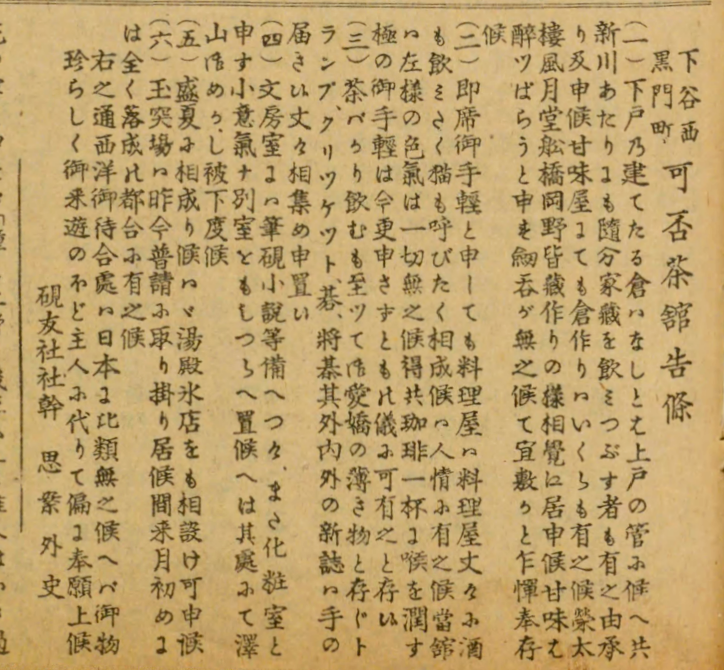 <An advertisement for the Kafu Tea House published in the first issue (May 1888) of Garakuta Bunko, said to be Japan's first literary magazine. The article describes the facilities, such as the study room and billiards room. (National Diet Library collection)>
<An advertisement for the Kafu Tea House published in the first issue (May 1888) of Garakuta Bunko, said to be Japan's first literary magazine. The article describes the facilities, such as the study room and billiards room. (National Diet Library collection)>In 1888 (Meiji 21), Japan's first authentic European-style cafe, Kahisakan, opened in Nishikuromoncho, Ueno, Shitaya Ward, Tokyo. A cup of coffee cost 1.5 sen, and one with milk cost 2 sen. Light snacks such as bread and castella cake were also served (hence, April 13th of each year is designated as "Coffee Shop Day").
The name Kuromon-cho comes from the fact that the main gate of Toeizan Kan'ei-ji Temple was called Kuromon during the Edo period, and the area was a temple town.
At that time, Kan'ei-ji Temple's grounds included the entirety of what is now Ueno Park, and the Kuromon Gate was located near the entrance.
In the early Meiji period, a fierce battle broke out at Kuromon Gate between the Shogitai, who sided with the former shogunate, and the forces of the new government (Satsuma), and it was the only place in Edo where fighting took place during the Boshin War. The Shogitai were defeated by cannon fire on the orders of Saigo Takamori.
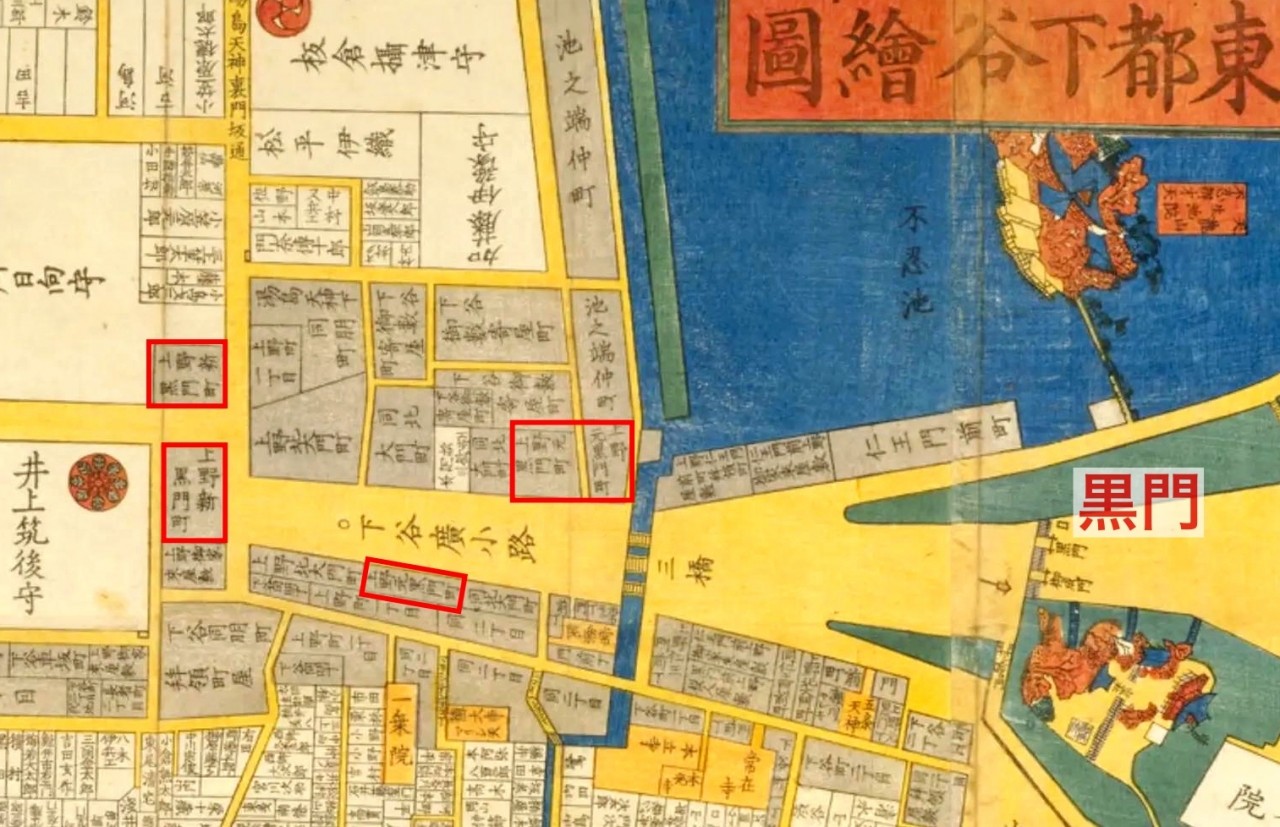 Kuromon and Ueno Kuromoncho depicted in a kiriezu (woodblock print) of Edo from the end of the Edo period. The grounds of Kan'ei-ji Temple are on the right, and Shinobazu Pond is above. The areas of Moto-Kuromoncho and Shin-Kuromoncho are scattered across Shitaya Hirokoji (now Chuo-dori). Ueno Nishi-Kuromoncho is on the Hikaru Pond side of Hirokoji, and was a scenic area with many restaurants. (Section from the Shitaya Ezu (woodblock print) of Edo Kiriezu (National Diet Library))
Kuromon and Ueno Kuromoncho depicted in a kiriezu (woodblock print) of Edo from the end of the Edo period. The grounds of Kan'ei-ji Temple are on the right, and Shinobazu Pond is above. The areas of Moto-Kuromoncho and Shin-Kuromoncho are scattered across Shitaya Hirokoji (now Chuo-dori). Ueno Nishi-Kuromoncho is on the Hikaru Pond side of Hirokoji, and was a scenic area with many restaurants. (Section from the Shitaya Ezu (woodblock print) of Edo Kiriezu (National Diet Library))Just 20 years later, a Western-style cafe opened showcasing the latest in Western culture.
Zheng Yongqing, who founded the Kafu Tea House, is said to have been the descendant of Zheng Chenggong's younger brother, Tagawa Shichizaemon, and his family had served as Tang liaison officers in Nagasaki for generations. A Tang liaison officer is a Chinese language interpreter, a position held by the shogunate who dealt with Chinese visitors to Dejima in Nagasaki.
Of course, the Tei clan, whose generations of employees worked on Dejima, would have been exposed to the coffee culture of the Dutch trading post, and the opening of the coffee shop was likely related to this situation.
It is interesting that the cutting-edge culture of the time, from its location to its founder, somehow retains the scent of the Edo Shogunate, a symbol of an earlier era that needed to be overcome.
After Manabu at Yale Manabu , Jeong Yong-kyung worked as a Foreign Ministry official and an English teacher, but it is said that he opened the coffee house with the aim of becoming a salon for the common people.
The two-story Western-style building at the Kafu Tea House not only offered billiards, cards, cricket, go, and shogi, but also had changing rooms, a restroom, and showers. It also had inkstones, brushes, letter paper, and envelopes, and was stocked with domestic and international newspapers and magazines, and was said to have functioned as a library, with a wide range of books, calligraphy, and paintings available for free browsing.
Jeong Yong-kyung was the one who opened this pioneering salon-style coffee shop.
However, these coffee shops did not become popular among the general public, and were only frequented by a few intellectuals, which is why it is said that they were too early.
The restaurant was forced to close after just under five years, and Zheng Yongqing subsequently stowed away to the United States, where he died.
However, it is long remembered that the coffee shop "Kahosakan" was the cornerstone of the Japanese coffee shops that later gave birth to a unique coffee culture in the world. A monument now stands at the site of the shop.
If you want to enjoy coffee more deeply
" CROWD ROASTER APP"
Manabu at CROWD ROASTER LOUNGE
・Push notifications for article updates・Full of original articles exclusive to CROWD ROASTER
・Direct links to detailed information about green beans and roasters
App-only features
- Choose green beans and roasters to create and participate in roasting events・CROWD ROASTER SHOP: Everything from beans to equipment is readily available
・GPS-linked coffee map function
